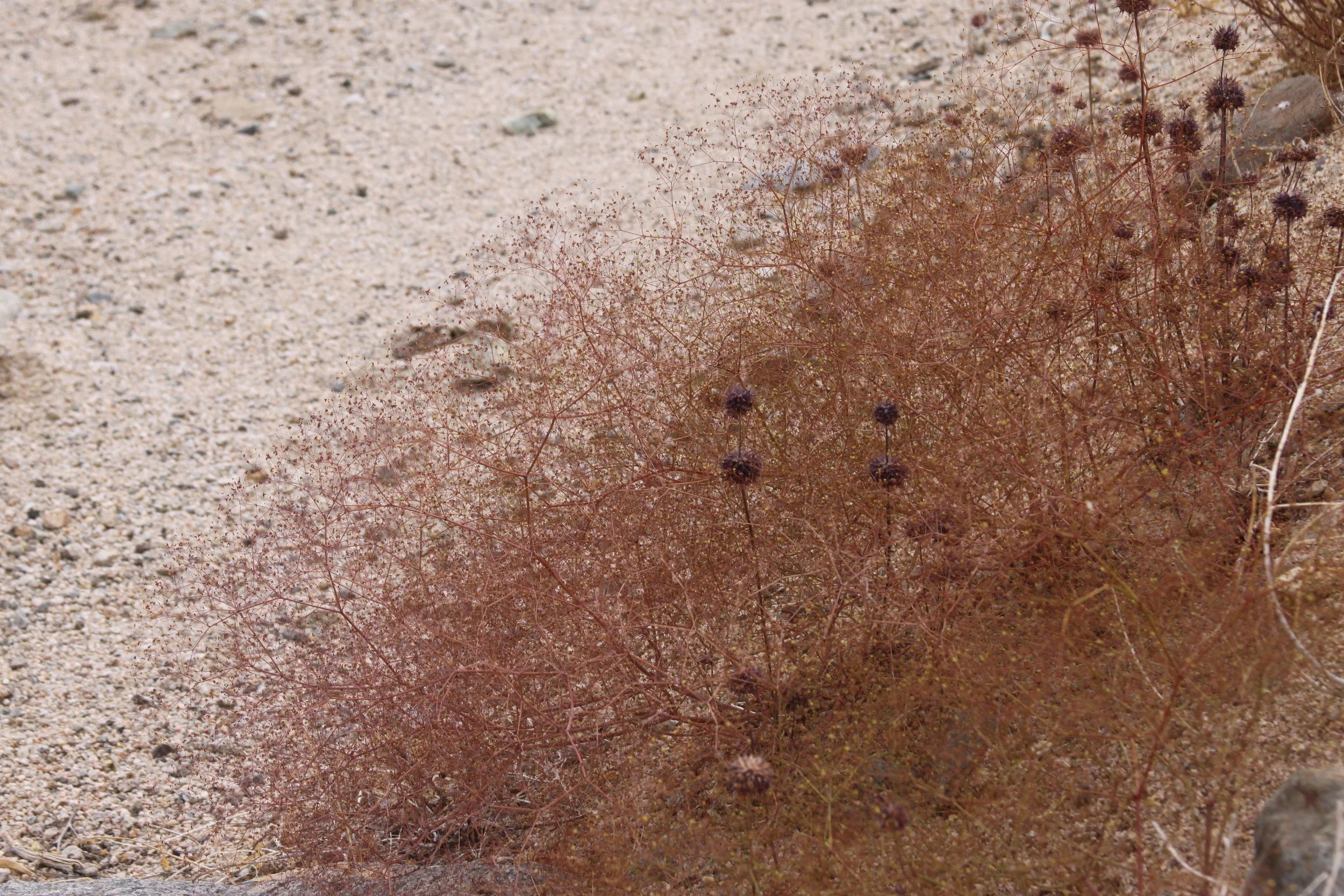Impressionist Gardening
I spent the weekend in Joshua Tree, studying the site for a new garden project. The property sits on about 2 acres of land, with a wash running along it’s edge, and the soil is pure sand, extending multiple feet below the surface (a dream site condition for me: see future posts). We are early on in the design process, so I spent most of my time wandering the area looking at plants I could propagate to include in the project.
When one thinks of a desert garden, bold plants come to mind - sharp agave, towering saguaros, fleshy succulents. But what I continuously find in my visits to the desert is a sense of delicacy and ephemerality, a softness in appearance to even the most spiny of plants. The first plant I always notice when driving in Joshua Tree is the Smoke Tree (Psorothamnus spinosus), ubiquitous in the sandy drainages lining the highway, a ghostly, glaucous cloud of spiny branches, seeming to dither at the edges and merge with the landscape beyond.
Psorothamnus spinosus, the Smoke Tree
According to the National Park Service, there are 750 plant species in Joshua Tree, with almost 50% of those being annuals. And just as these annuals create a stunning ephemeral flower show - especially in significant bloom years like this one - many of the more subtle desert plants give a similarly ephemeral effect in the plays of light on their form, at turns luminous and then transparent, fading into the landscape, flashing and disappearing like fireflies. This creates a constant awareness of the landscape as a whole, rather than on any individual plant; when your eyes seem to focus on the plant they fall off the edge to the landscape behind.
Eriogonum sp. forming a soft fog over the ground
Unidentified Eriogonum sp. and Salvia columbariae
While the more architectural forms of the desert - cacti, agaves, joshua trees - are wonderful and at many times necessary to the garden, I’m keen to experiment with the more ‘Impressionistic’ qualities of plants - using delicate, airy plants to create washes of color and light, rather than hard defined lines and flowers.
I first noticed this quality of “Impressionism” in planting design with Sarah Price’s gold-medal Chelsea Flower Show garden from 2018. The initial artist rendering of the design was blurred and diffuse, washed with color, with only a handful of more architectural plantings.
The M&G Garden by Sarah Price (artist rendering)
Upon seeing photographs of the garden installed, I first thought the planting design was painfully delicate, with many different species of small, fragile looking plants individually placed (and how could a Brit use “my” mediterranean-climate plant palette?). But upon closer inspection, I think there are valuable lessons in this garden. The delicateness of the plantings and the individual spacing create a quality of blending, where the legibility of the plantings is blurred, and the colors of the plants become more akin to an underpainting, rather than the image itself, the individual plant disappearing into the plants behind or around it, and this effect continually changing as one walks through the space, or as the light changes through the day.
The M&G Garden by Sarah Price, Chelsea Flower Show, 2018
The M&G Garden by Sarah Price, Chelsea Flower Show, 2018
A stunning example of this Impressionistic take on planting design is the annual display created in 2018 by the horticulturalist Sophie Cook during her training at Dyffryn Gardens in Wales. Flowers and grasses intertwine amorphously, softening their individual forms into a larger whole yet simultaneously creating a sense of depth and movement. Cook grew 1500 annual plants from seed to plant this 280m square border.
Annual Display by Sophie Cook, Dyffryn Gardens 2018
Annual Display by Sophie Cook, Dyffryn Gardens 2018
Annual Display by Sophie Cook, Dyffryn Gardens 2018
Gardens, especially those of typical landscape architecture, are often created akin to a painting, drawn in plan-view as flat and unchanging. Yet just as Impressionism sought to evoke the feeling and atmosphere of a scene rather than it’s direct image, I believe gardens should seek the same level of dynamism and atmosphere, and in their multi-dimensional medium are perhaps even better suited to do so. This more ethereal planting style, while certainly not the only means to such an end, is a fun way to experiment with the creation of evocative and meaningful spaces.
To close, some of the initial plants I am experimenting with to create these effects:
Asparagus virgatus
Astragalus trichopodus var. phoxus
Chionochloa conspicua
Chorizanthe staticoides
Chorizanthe douglasii
Delphinium cardinale
Delphinium gypsophilum
Deschampsia flexuosa
Edmondia sesamoides
Eriogonum nudum
Eriogonum parishii
Fallugia paradoxa
Gomphrena decumbens
Psorothamnus spinosus
Sporobolous airoides
Stipa coronata
Stipa gigantea
Stipa hymenoides
Tetradenia riparia
- Jonathan Froines










